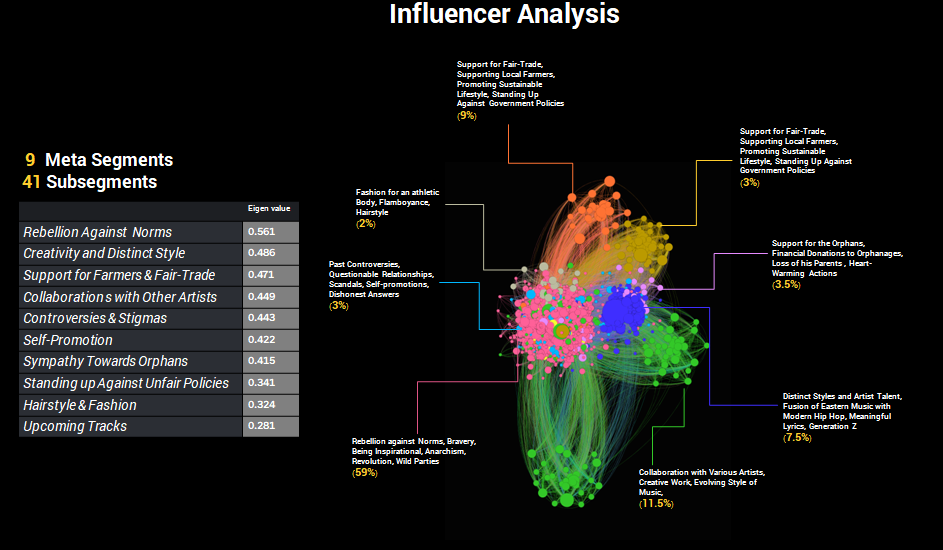Background
Data show that engagements with brand ambassadors are more effective and profitable than short-term endorsements. These engagements offer significantly higher ROIs and require less attention and time from executives. So, many national brands are opting for these longer-term arrangements.
However, this strategy is not without risks. Any undesirable association with the ambassadors can pose severe threats to the brand equity of the companies. Many C-suite executives have voiced their concerns about the absence of tools and methodologies to do necessary the due diligence to qualify these brand ambassadors.
Over the past year, with the help of our brand partners, BrainMustard has developed a technology solution to help with this due diligence and mitigate the risks associated with scouting and qualifying brand ambassadors. This technology allows our clients to reap the benefits of these long-term campaigns while minimizing the risk to their brand equity.
Reason #1: Detecting negative perceived associations with the ambassadors or their fan base that could put the company’s brand equity in jeopardy
The Canadian Chain & The Popular Ethnic Influencer
A nationwide chain was looking for an established ethnic influencer to serve as its ambassador to celebrate fair-trade. During the discovery and scouting process, the marketing team discovered a well-known Asian artist who has been actively supporting farmers and fair trade in Asia. His talent, lifestyle, and artistry were highly appreciated by Asian millennials worldwide. The fusion of Asian music with western R&B and modern hip hop made his songs distinct and appealing to Gen-Z. His high engagement with his massive fanbase was unrivaled. All these criteria made him a suitable candidate to become the brand ambassador for this chain. Or Did they?
The chain decided to partner with BrainMustard to do the necessary due diligence and audit the influencer. Our technology solution confirmed many of the benefits of having this artist as the ambassador for the brand. In fact, we unearthed many more advantages which the chain did not consider in their assessment.
For example, we identified that the campaign’s message would resonate with more than 47% of the artist’s fanbase. These fans were admiring the artist for being outspoken about the global policies that negatively affect the livelihood of the local farmers. These fans have actively taken it upon themselves to share and exchange relevant articles on the artist’s social channels to inform the world of these unfair practices. Several psychographic segments of the fans would closely match the campaign’s message, which makes the campaign’s message more effective in promoting the brand and resonating with these segments.
Quick Facts:

However, we also identified many unaccounted aspects of this collaboration that could pose serious threats to brand equity. For instance, our algorithm determined that over 25% of the fanbase admire the artist for his rebellious lifestyle. They have associated his activism for fair-trade as a form of anarchism. This association is undesirable and detrimental for a national chain promoting a peaceful, family-friendly shopping experience.
Reason #2: Verifying that the influencer has established a strategic persona that matches that of the campaign’s message
Moreover, during his philanthropic campaigns to support the farmers, the artist challenged the government and criticized them for their policies concerning the local farmers. These efforts did lead to verbal clashes between him and the authorities. This has led many to believe that the entire campaign was orchestrated to pave the way for him to run for office. These rumors made him less authentic in the eyes of many of his followers.
Lastly, our algorithm also identified that there had been severe conflicts among his fanbase. For instance, his flamboyant style is strongly associated with less sophisticated lower-class members of society in southwest Asia. As such, many of his fans are mocked for emulating his style. These complex interactions have led to a less cohesive segmentation of his fanbase, making it unpredictable and risky for the brands.
This information helped our client to choose a more qualified albeit less prominent public figure over their initial choice.
Reason #3: Predicting the size of the ambassador’s fanbase with whom the message will resonate
If you would like to see whether our solutions are right for your company, please contact us. We love to brainstorm with you.





